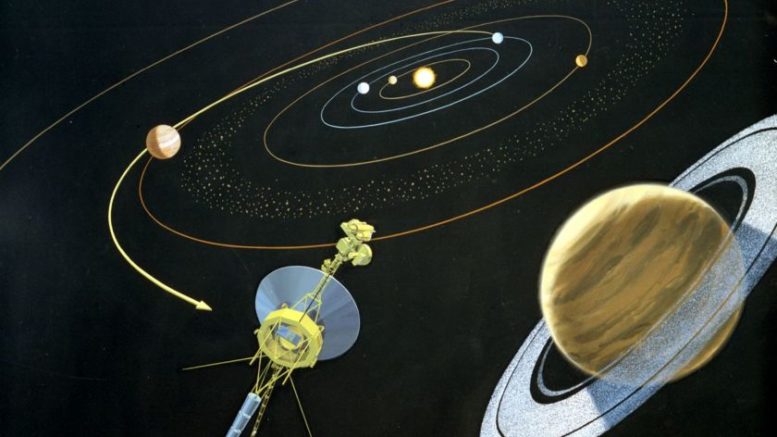In orbital mechanics and aerospace engineering, a gravity assist is the use of the relative movement and gravity of a planet or other astronomical object to alter the path and speed of a spacecraft, typically to save propellant and reduce expense.
The origins of a gravity assist can trace its origins to the mid 20th century, in which some scientific writers began to theorize about its potential use. However, it wasn’t used until spacecraft started exploring the galaxy. The simple explanation of what a gravity assist is, would be to say that the spacecraft uses (steals) the gravity from a celestial object for its own use.
Certain Limits
The main practical limit to the use of a gravity assist maneuver is that planets and other large masses are seldom in the right places to enable a voyage to a particular destination. However, then these larger massed objects are in the proper places, there are limits that are affected by the atmosphere.
If there is an atmosphere around the celestial object, then as the object gets closer to the approach, the faster the exit speed. This allows the object to receive the greatest increase in kinetic energy gain from a rocket burn as it possibly could; however, if a spacecraft gets too deep into the atmosphere, the energy lost to drag can exceed that gained from the planet’s gravity.
If there are not an atmosphere on the approaching body, there is still a limit to how close a spacecraft can approach, which would depend on the approach and escape velocity at the point of closest approach.
Notable Examples
- Luna 3 in 1959 was the first mission and first time that a gravity assist maneuver was used as Luna 3 photographed the far side of Earth’s Moon
- Mariner 10 was the first spacecraft to use the gravitational slingshot effect to reach another planet. It passed Venus on its way to study Mercury.
- Voyager 1 gained the energy to escape the Sun’s gravity completely by performing slingshot maneuvers around Jupiter and Saturn.
- Cassini passed by Venus twice, then Earth, and finally Jupiter on the way to Saturn.
- Rosetta used four gravity assist maneuvers to accelerate throughout its time spent in the inner solar system
- Juno used a gravity assist speed boost from Earth and another Earth flyby on its way to Jupiter to increase its speed.
- Parker Solar Probe will use multiple gravity assists at Venus to remove the Earth’s angular momentum
Resources And Further Readings
https://solarsystem.nasa.gov/basics/primer/

Be the first to comment on "Gravity Assist: The Basics"